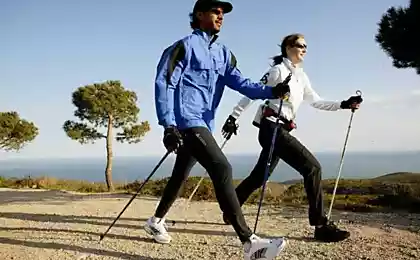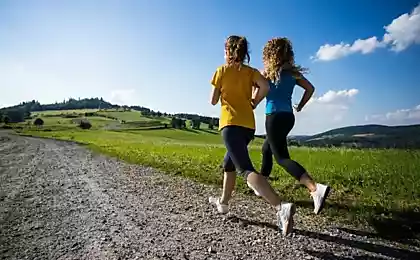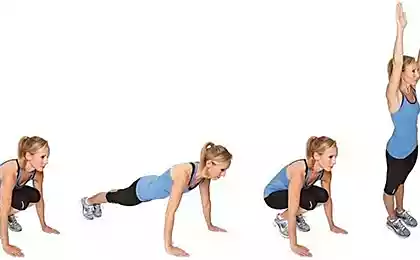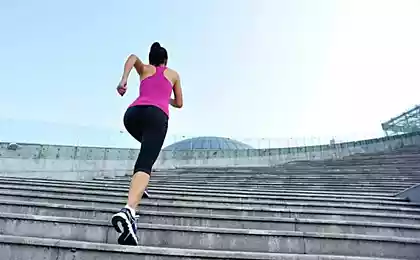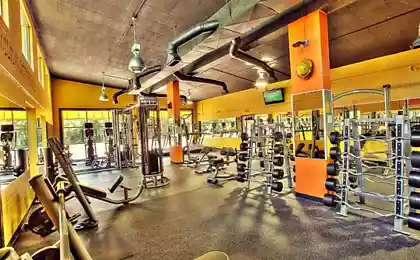203
7 types of walking that will help to improve health and diversify training

Walking is one of the most natural and accessible forms of physical activity. However, few people realize that there are different walking techniques and styles, each with its own unique health benefits. By turning an ordinary walk into a purposeful workout, you can significantly improve your physical condition, strengthen certain muscle groups and solve specific problems of healing the body.
Modern lifestyle forces us to spend most of the day sitting – at the computer, driving a car or in front of the TV. This negatively affects our health: muscle tone decreases, blood circulation worsens, metabolism slows down. According to the World Health Organization, insufficient physical activity is the fourth leading risk factor for global mortality, causing 6% of deaths worldwide.
Regular walking helps to counter these negative trends. According to studies, just 30 minutes of walking a day reduces the risk of cardiovascular disease by 19%, the risk of stroke by 30%, and the risk of developing type 2 diabetes by 50%. Walking is a low-traumatic activity, suitable for people of any age and almost any level of physical fitness.
Why should you diversify your walking?
Monotony is the main enemy of any training. The body quickly adapts to the same type of loads, and the effectiveness of classes decreases. In addition, monotony reduces motivation and interest in training. Using different walking techniques, you not only get more diverse physical activity, but also maintain interest in activities, which helps to form a stable habit of regular activity.
1. Nordic walking
Scandinavian walking with sticks originated in Finland as a summer training method for skiers. Today it is a full-fledged form of fitness, which has received recognition around the world due to its effectiveness and accessibility.
When Nordic walking, up to 90% of the muscles of the body are involved, including the muscles of the upper part of the body, which practically do not work during normal walking. Thanks to reliance on sticks, the load on the joints of the lower extremities is reduced, which makes this type of activity suitable even for people with musculoskeletal problems.
Choose the right length of sticks: they should be about 30-40 cm shorter than your height. When walking, keep the sticks at an angle, pointing them back rather than vertically. This will ensure proper movement biomechanics and maximum exercise efficiency.
2. Interval walking
Interval walking is the alternation of sections of brisk walking with periods of slower pace. This technique is borrowed from high intensity interval training (HIIT) and adapted for walking.
Studies show that interval walking burns calories and improves cardiovascular health more effectively than walking at a constant pace. According to Japanese scientists from Shizuoka University, a five-month interval walking program helps reduce the risk of hypertension and diabetes, and improves fitness in middle-aged and elderly people much more effectively than regular walking.

How to practice interval walking:
- Start with a 5-minute warm-up at a comfortable pace
- Increase the speed to the most comfortable for 1-2 minutes
- Return to a calm pace for 2-3 minutes to recover
- Repeat the cycle 5-8 times
- Finish with a 5-minute hitch at a slow pace
3. Weighted walking
Walking with weights is an effective way to increase exercise intensity without increasing speed or duration. Weights can be worn on the ankles, wrists or use a weighted vest.
When walking with weighting, energy consumption increases, muscles work more actively, the load on the cardiovascular system increases. A study published in the journal Medicine & Science in Sports & Exercise found that using weights weighing 1-3 kg increased calorie expenditure by 5-15% compared to normal walking.
Start with a small weight (0.5-1 kg) and gradually increase the load. Do not use weights in each workout - 2-3 times a week is enough. Avoid using weights for joint and spinal problems without consulting a doctor.
4. Walking barefoot
Walking barefoot is an ancient practice that is experiencing a new birth in modern fitness. When walking without shoes, the small muscles of the foot are activated, which usually do not work in shoes, proprioception improves (sense of the position of body parts in space), the ligaments of the ankle joint are strengthened.
According to a study published in the Journal of Science and Medicine in Sport, regular walking barefoot contributes to the formation of the correct arch of the foot, reduces the risk of flat feet and improves the overall biomechanics of walking. Walking barefoot on uneven surfaces (sand, grass, pebbles) provides a natural foot massage, stimulating reflexogenic zones.
Walking barefoot is especially beneficial for urban dwellers who spend most of their time wearing shoes on flat surfaces. Start with a few minutes of walking barefoot on soft grass or sand and gradually increase the time. Pay attention to surface safety by avoiding sharp objects and contaminated areas.
5. Walking backwards (retrowalking)
Retro walking, or walking backwards forward, is an unusual, but very useful technique, actively used in rehabilitation medicine and sports training. When walking backwards, the pattern of movement changes, which leads to the activation of stabilizer muscles and increased work of the muscles of the anterior thigh surface (quadriceps).
Studies show that retro walking is 40% more effective than normal walking for cardiovascular fitness at the same speed. In addition, it helps to improve coordination of movements, develop spatial perception and strengthen the stabilizer muscles responsible for balance.
Perform retro walking in a safe place without obstacles, such as a stadium or gym. Start with small distances (20-30 meters) and gradually increase the distance. For greater safety, you can perform the exercise with a partner who will control the space behind you.
6. Walking on rough terrain (trailing)

Trailing – walking along nature trails with uneven terrain – is not only physical activity, but also effective training of the vestibular apparatus and coordination. When walking on rough terrain, the body constantly adapts to changing conditions, which develops proprioception and strengthens muscle stabilizers.
Overcoming the ascents and descents, the need to balance on an uneven surface significantly increase energy costs compared to walking on a flat road. According to the American College of Sports Medicine, walking uphill increases calorie expenditure by 30-40% compared to walking on a flat surface.
Advantages of Trailing:
- Various load on different muscle groups
- Development of coordination and balance
- Reducing psychological stress through contact with nature
- Strengthening of the ankle joints
- Increased calorie expenditure
7. Walking with mindfulness (meditative walking)
Meditative walking combines physical activity with mindfulness practice, which benefits not only the body but also the psyche. This practice is borrowed from the Buddhist tradition and adapted for modern man as a way to overcome stress and improve the psycho-emotional state.
When meditative walking, attention is focused on the very process of movement, sensations in the body, breathing and the surrounding environment. This allows you to achieve a state similar to the effect of formal meditation while benefiting from physical activity.
The technique of meditation walking:
Choose a quiet place with a minimum of distractions. Move slowly, paying attention to each step, how the foot touches the ground, how your body weight moves, how your muscles work. Synchronize breathing with steps: for example, take a breath three steps and exhale three steps. Note sounds, smells, tactile sensations without evaluation and analysis.
Research conducted at Harvard Medical School has shown that regular practice of meditative walking helps reduce blood levels of cortisol (stress hormone), improves cognitive function and helps in the treatment of depressive and anxiety disorders.
How to create a training program with different types of walking
For maximum efficiency, it is recommended to combine different types of walking throughout the week. For example:
- Monday: Interval walking (30 minutes)
- Tuesday: Meditative walking (20 minutes)
- Wednesday: rest or easy normal walking
- Thursday: Nordic walking (40 minutes)
- Friday: Walking with weights (25 minutes)
- Saturday: Trailing (45-60 minutes)
- Sunday: retro walking and barefoot walking (combined workout, 30 minutes)
Conclusion
A variety of walking techniques allows not only to avoid the monotony of training, but also to get a comprehensive health effect, affecting various body systems. Regardless of your age, fitness level and goals, you can choose the most suitable types of walking for you and create an individual training program.
Remember that even simple changes in your habitual activity can bring significant benefits. Start small, gradually increase the intensity and duration of training, listen to your body. And most importantly, enjoy the process, because positive emotions are an important component of a healthy lifestyle.
Glossary
Proprioception
Feeling the position of the parts of your body relative to each other and in space. Proprioceptors (receptors) are located in the muscles, tendons and joints.
Metabolism
The set of chemical reactions occurring in the body and ensuring its vital activity, including the processes of obtaining energy from food and tissue renewal.
Interval Training (HIIT)
A training method in which short intense anaerobic exercises alternate with less intense recovery periods.
reflexogenic zones
Areas of the body with a high concentration of nerve endings, the stimulation of which has a therapeutic effect on the corresponding organs and systems of the body.
Stabilizing muscles
Muscle groups responsible for maintaining the position of the body and joints in space, ensuring stability and balance.
Trailing
Walking or running on natural routes with uneven terrain, including ascents, descents, overcoming natural obstacles.
Mindfulness meditation
Practice focused attention at the moment without evaluation, analysis and distraction to extraneous thoughts.

